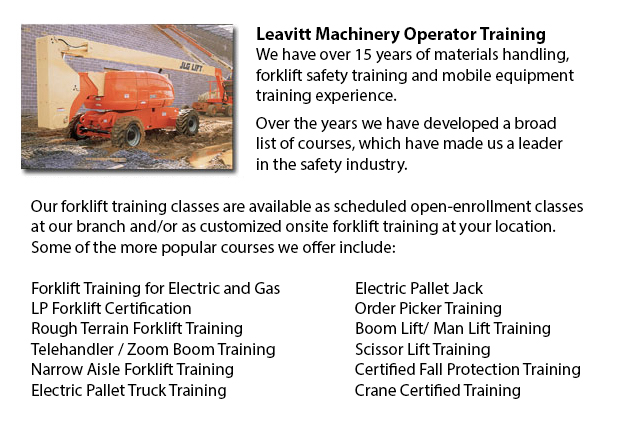
Boom Lift Certification Oakville - Elevated work platforms allow maintenance operations and work to be done at levels that can not be reached by whatever other method. Boom Lift Certification Training teaches workers regarding the safe operation of boom lifts and scissor lifts.
When work platforms are not operated safely, they have the possibility for serious injury and even death, regardless of their lift style, site conditions or application. Electrocution, falls, tip-overs and crushed body parts can be the unfortunate result of wrong operating procedures.
In order to avoid aerial lift incidents, people must be qualified to be able to train workers in the operation of the certain type of aerial lift they would be making use of. Controls must be easily accessible beside or in the platform of boom lifts made use of for carrying workers. Aerial lifts should not be be modified without the express permission of other recognized entity or the manufacturer. If you are leasing a lift, make certain that it is maintained correctly. Before utilizing, controls and safety devices need to be checked to ensure they are working properly.
It is vital to follow safe operating procedures in order to avoid workplace accidents. Driving an aerial lift while the lift is extended should not be done, nonetheless, some models are designed to be driven when the lift is extended. Always set brakes. Set outriggers, if available. Avoid slopes, but when required make use of wheel chocks on slopes that do not exceed the slope restrictions of the manufacturer. Follow weight and load restrictions of the manufacturer. When standing on the boom lift's platform, use a safety belt with a two-foot lanyard tied to the boom or basket or a full-body harness. Fall protection is not necessary for scissor lifts that have guardrails. Never sit or climb on guardrails.
This course features the following topics: training and certification; safety guidelines to be able to prevent a tip-over; surface conditions and slopes; checking the travel path & work area; other guidelines for maintaining stability; stability factors; leverage; weight capacity; testing control functions; pre-operational inspection; safe operating practices; mounting a motor vehicle; power lines and overhead obstacles; safe driving procedures; PPE and fall protection; utilizing harnesses and lanyards; and avoiding falls from platforms.
The successful trainee would learn the following: authorization and training procedures; pre-operational inspection procedures; factors affecting the stability of boom and scissor lifts; how to prevent tip-overs; how to use the testing control functions; how to utilize PPE and strategies to be able to avoid falls.
-
Order Picker License Oakville
Order Picker License Oakville - Order preparation operation or order picking as it is more normally known is a method used within warehouse operations and consists of employees called order pickers. The order picker's task is to collect and take arti... More -
Forklift Operator Certification Oakville
Forklift Operator Certification Oakville - Forklift operator certification is normally needed for personnel working within industrial, warehouse or construction setting to guarantee the safe utilization of forklifts. Workplace training need to follow... More -
Scissor Lift Certification Oakville
Scissor Lift Certification Oakville - A lot of worksites and tradespeople like iron workers, welders and masons utilize scissor lift platforms to help them reach elevated work areas. The utilization of a scissor lift is usually secondary to their tra... More -
Forklift Training Courses Oakville
Forklift Training Courses Oakville - When forklift operator safety training is customized for illiteracy, training time is reduced by 50%. Train the trainer, forklift training certification and lift-truck operator driver safety training evaluation pr... More -
Manlift Training Oakville
Manlift Training Oakville - There are numerous manlift training programs which offer a review of the manlift machinery. The practicum portion of the training is one more vital portion of the course. In this section the trainee has chance to demonstra... More -
Boom Lift License Oakville
Boom Lift License Oakville - To operate an aerial boom lift, operators should be licensed through training that can be obtained utilizing both classroom sessions and practical training and by attaining a boom lift license. Instruction should be given... More -
Crane / Overhead Crane / Self-Erect Crane / Truck Mounted Crane / Hydraulic Cranes Training in Oakville
Bridge cranes or likewise called overhead cranes are actually a type of industrial material handling crane using a line and hook mechanism that runs on a horizontal beam running along two widely separated rails. Several overhead cranes could be seen... More -
Telehandler Training in Oakville
Telescopic handlers normally called telehandlers for short, are an extremely popular piece of heavy construction machinery. They are widely utilized in the construction and agricultural trades. These machines have maximum reaching ability and could g... More

Forklift Training Oakville
TOLL FREE: 1-888-254-6157
Oakville, Ontario
forklifttrainingoakville.com
Email Us
About Us


